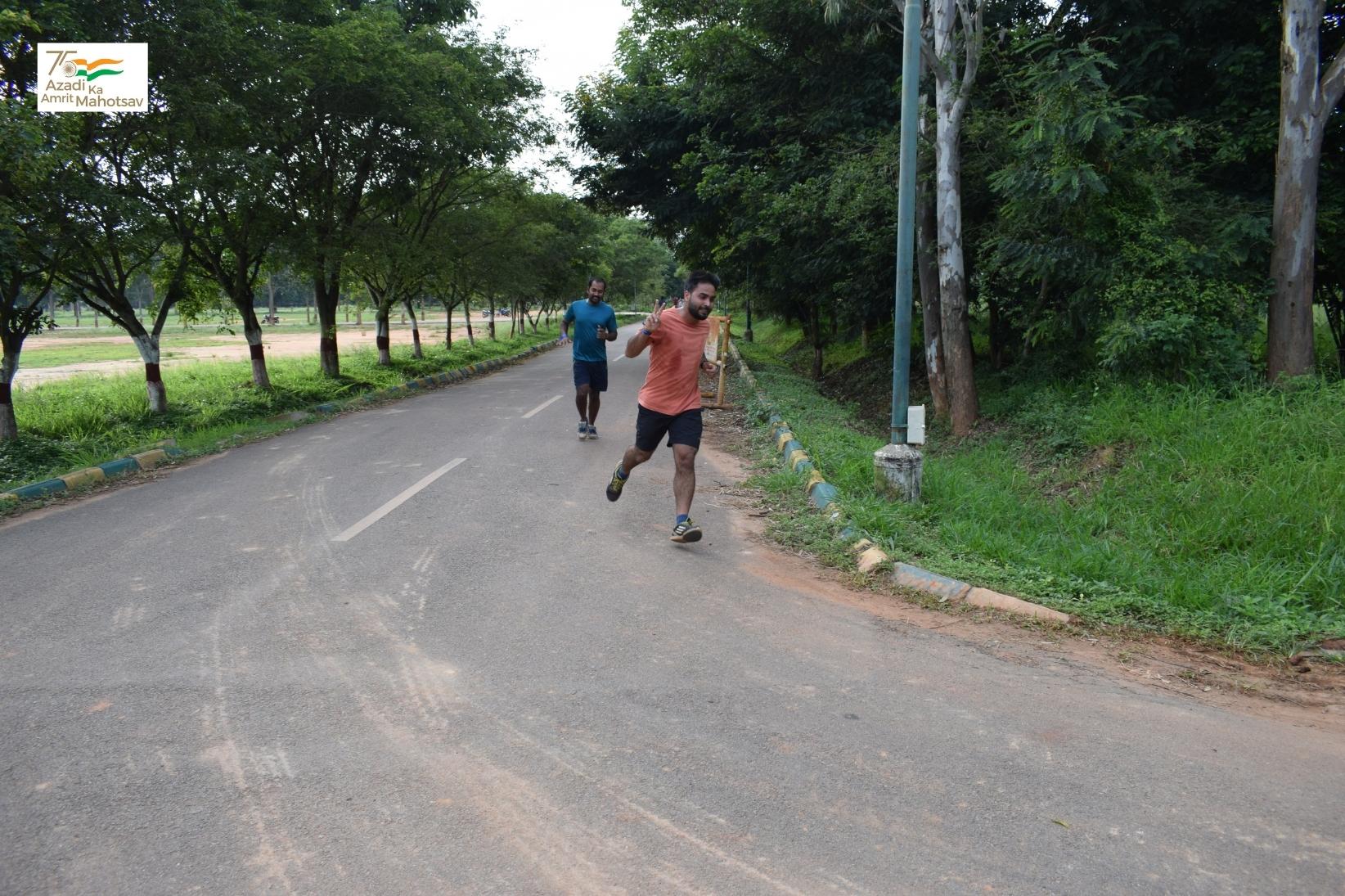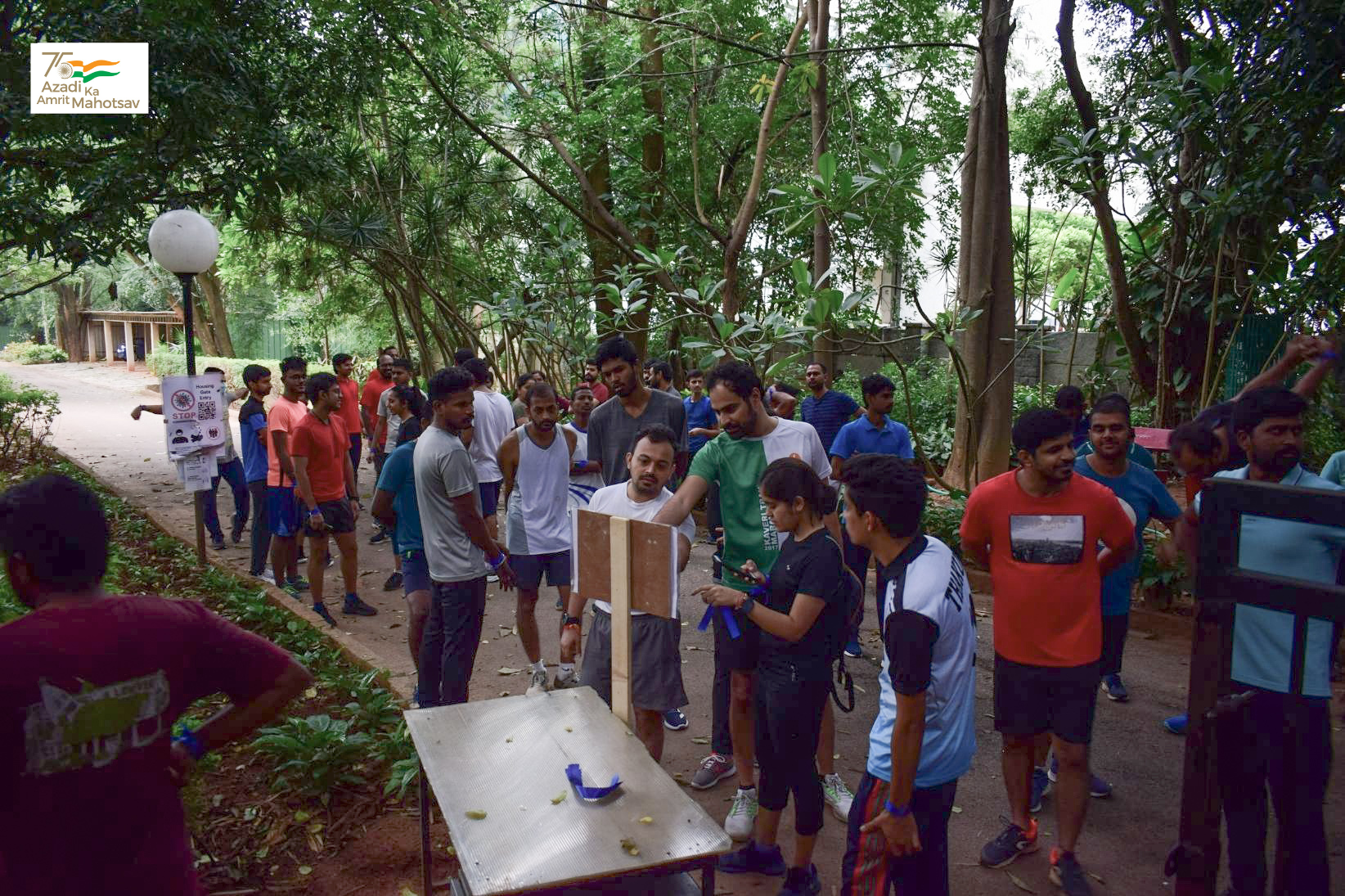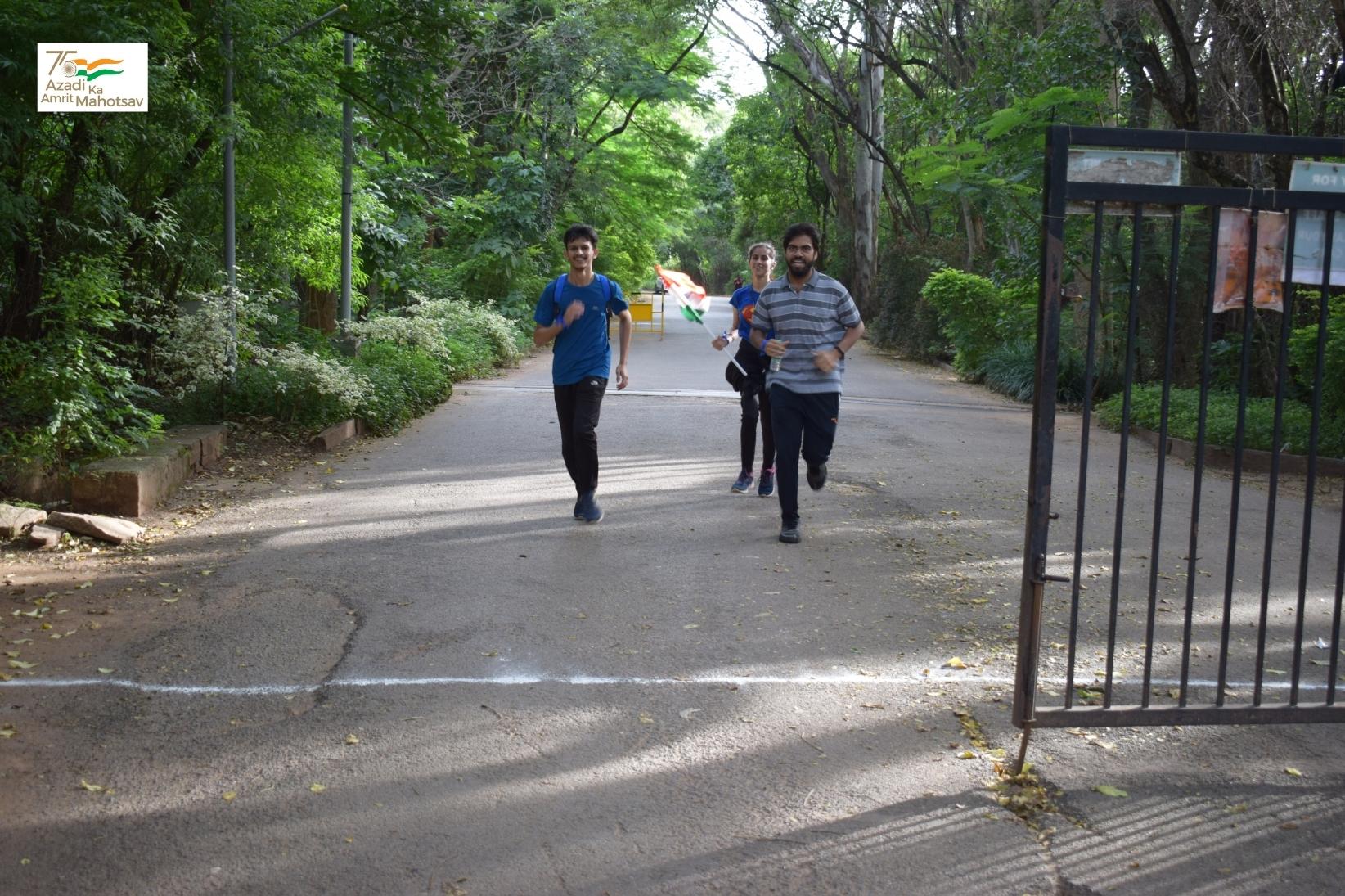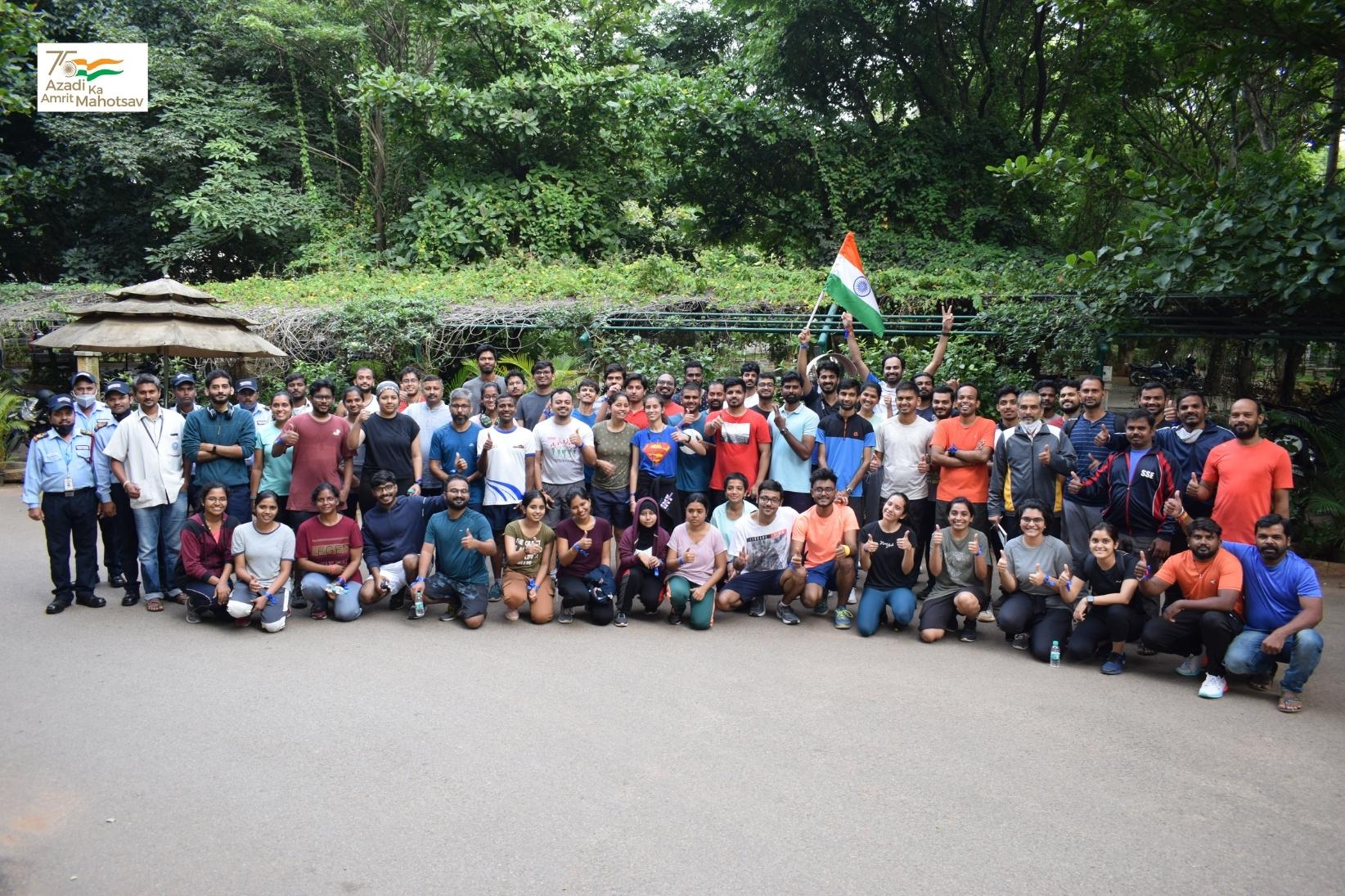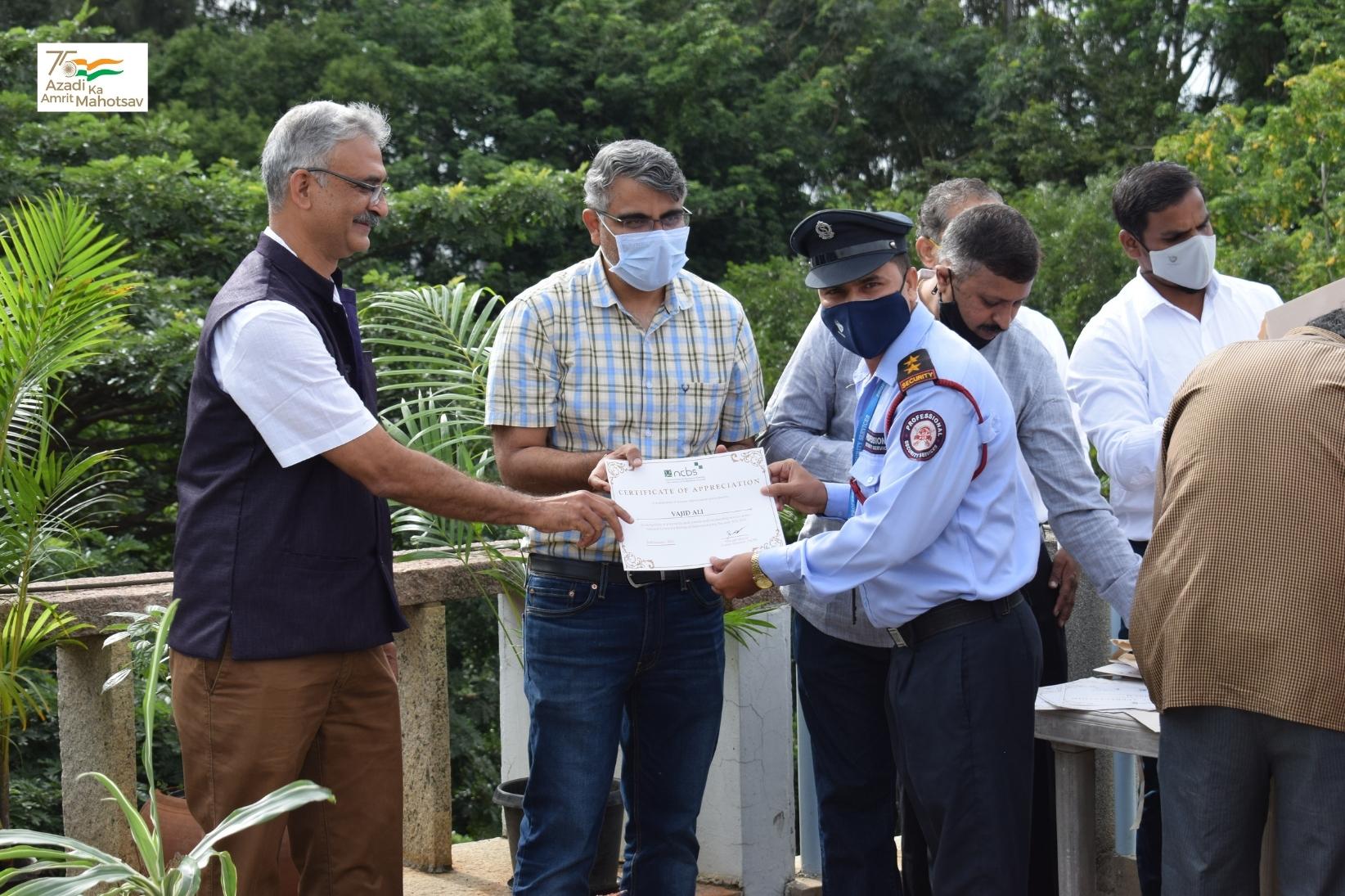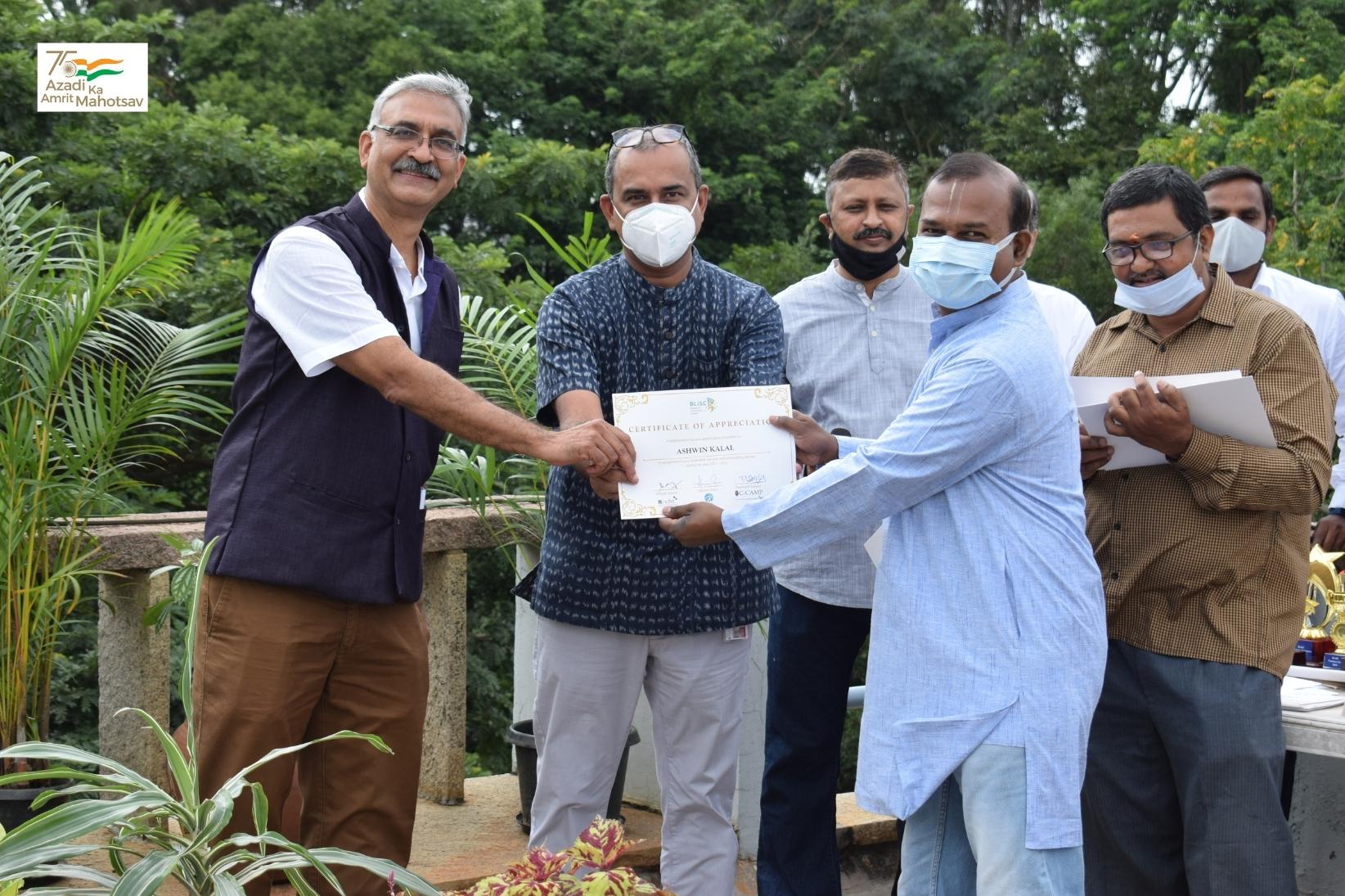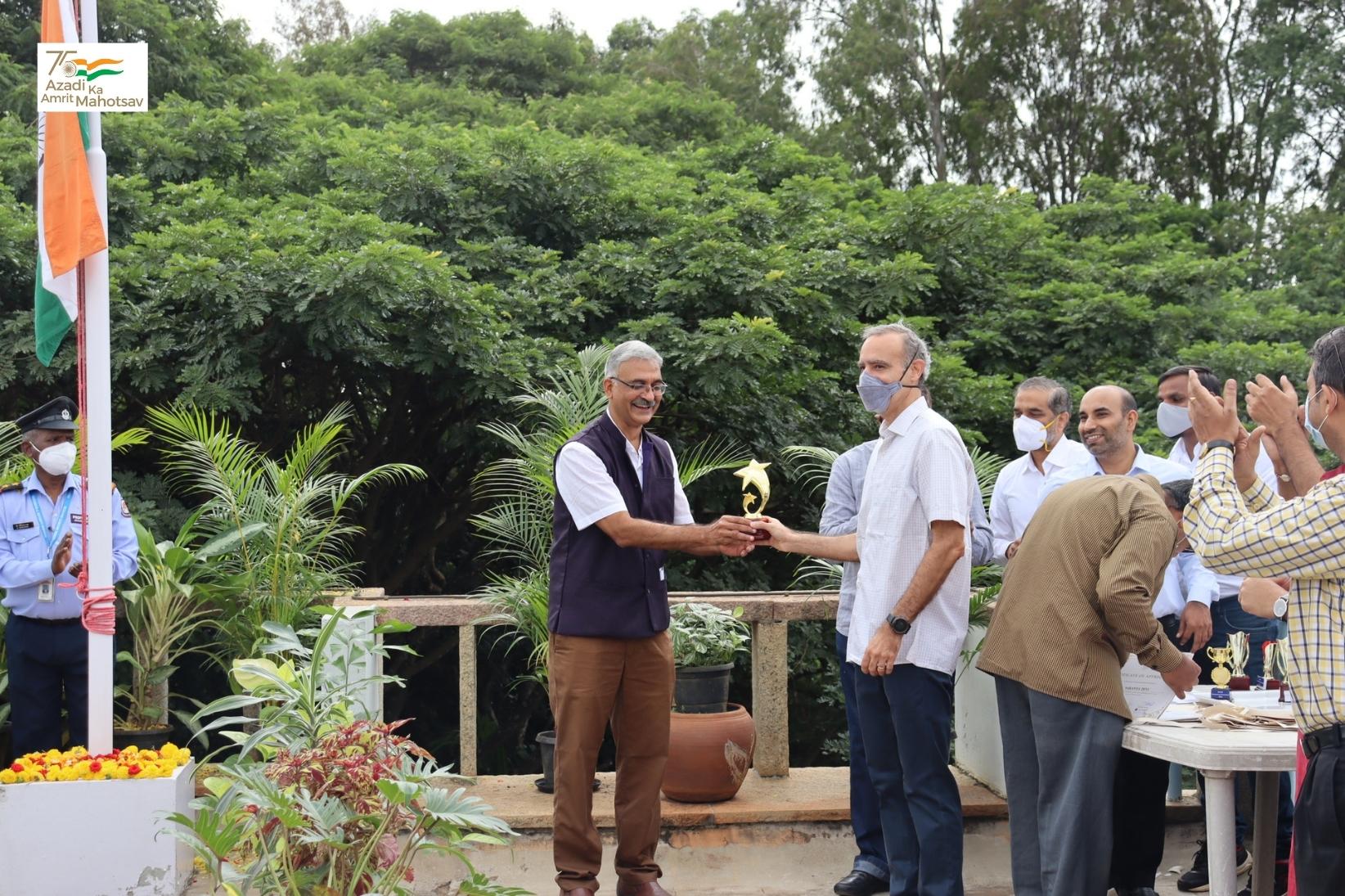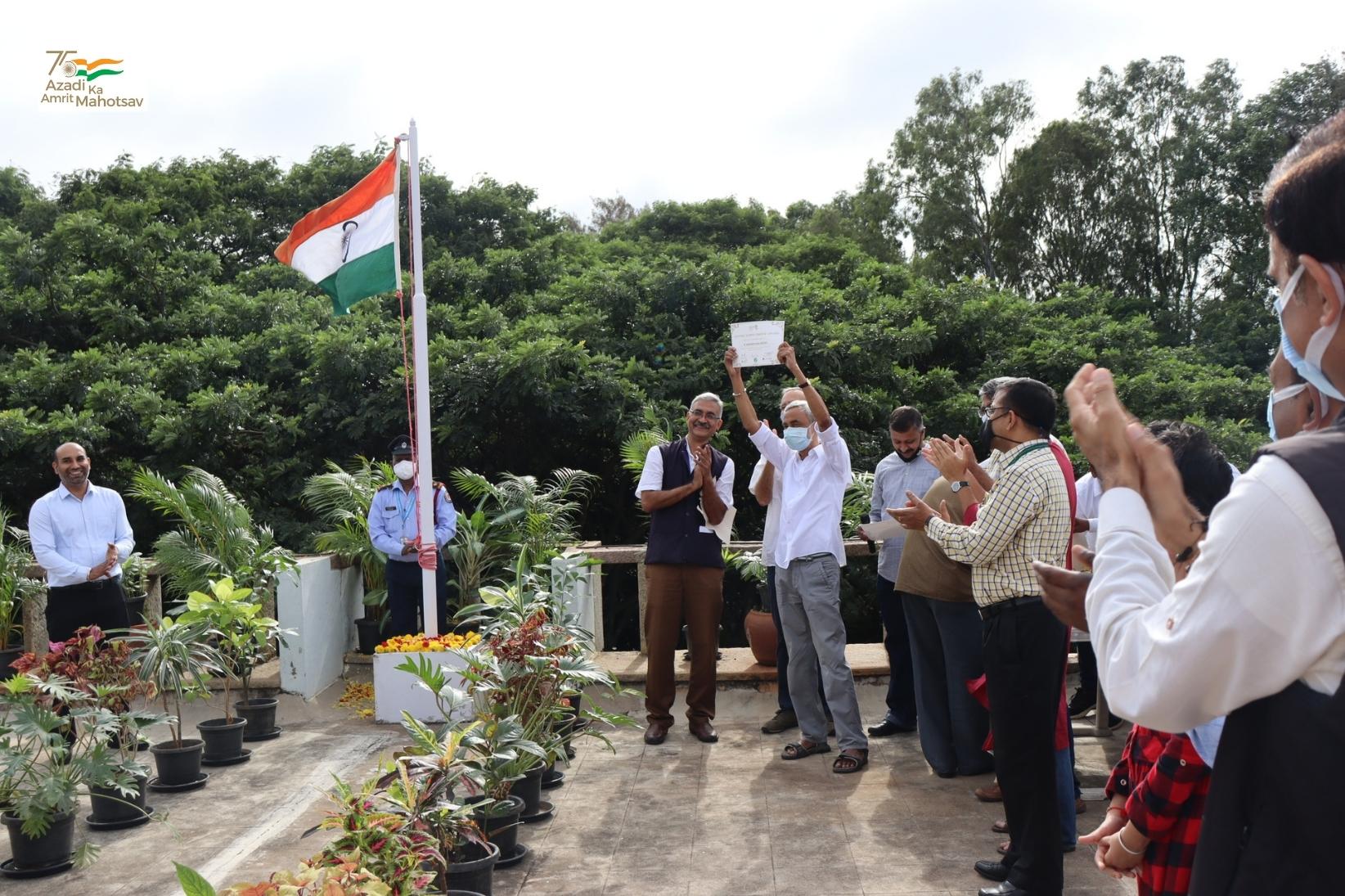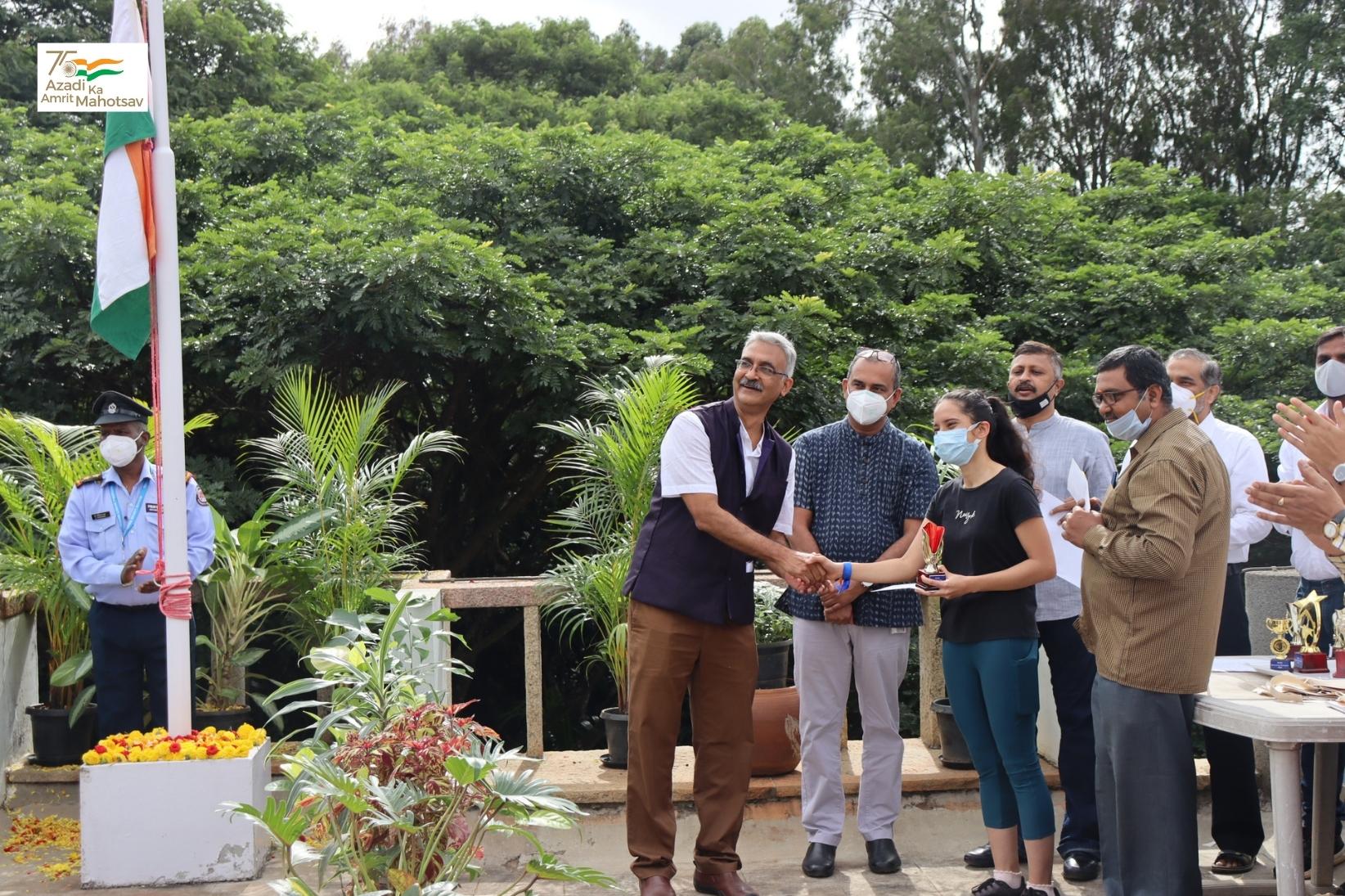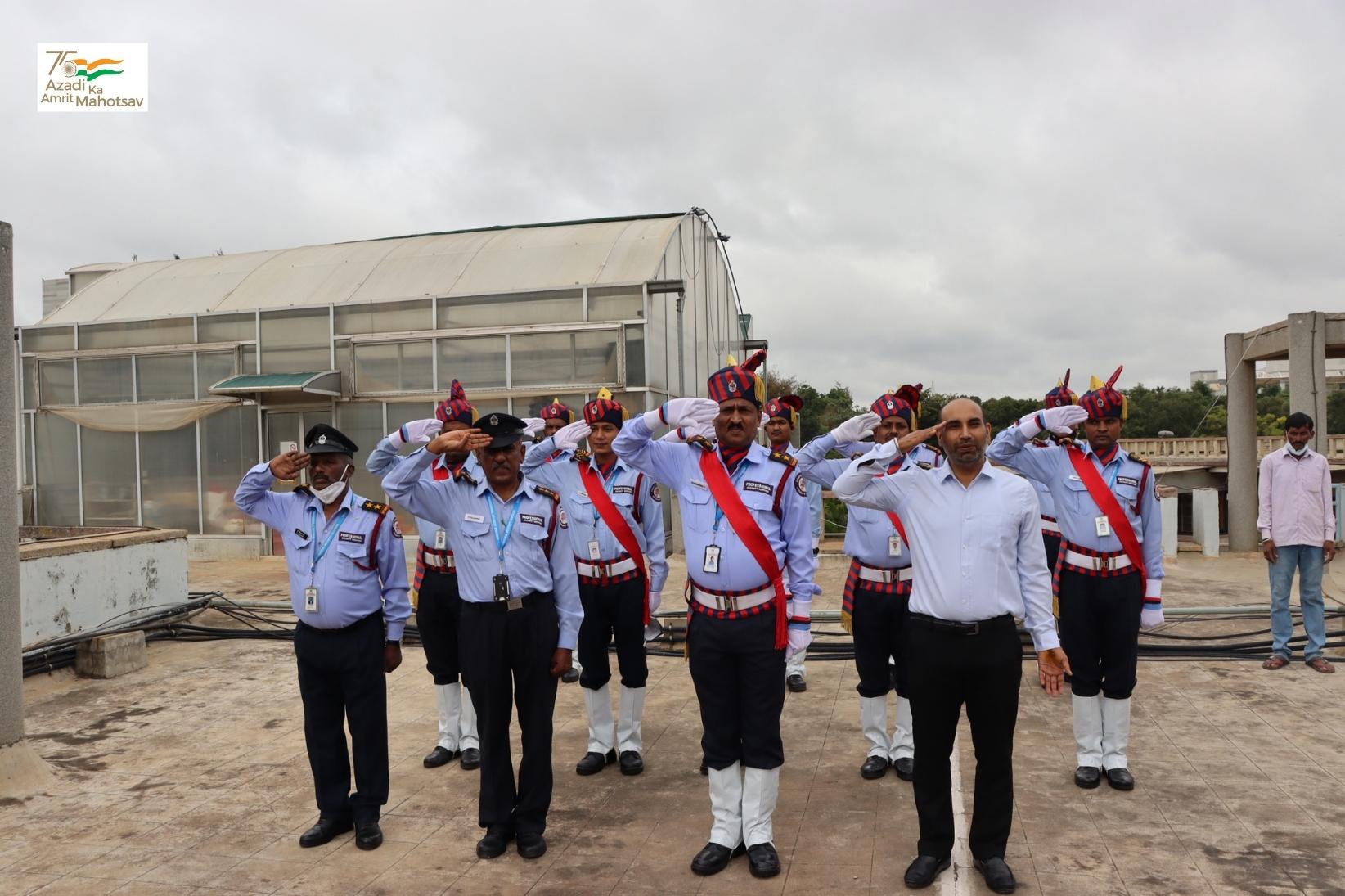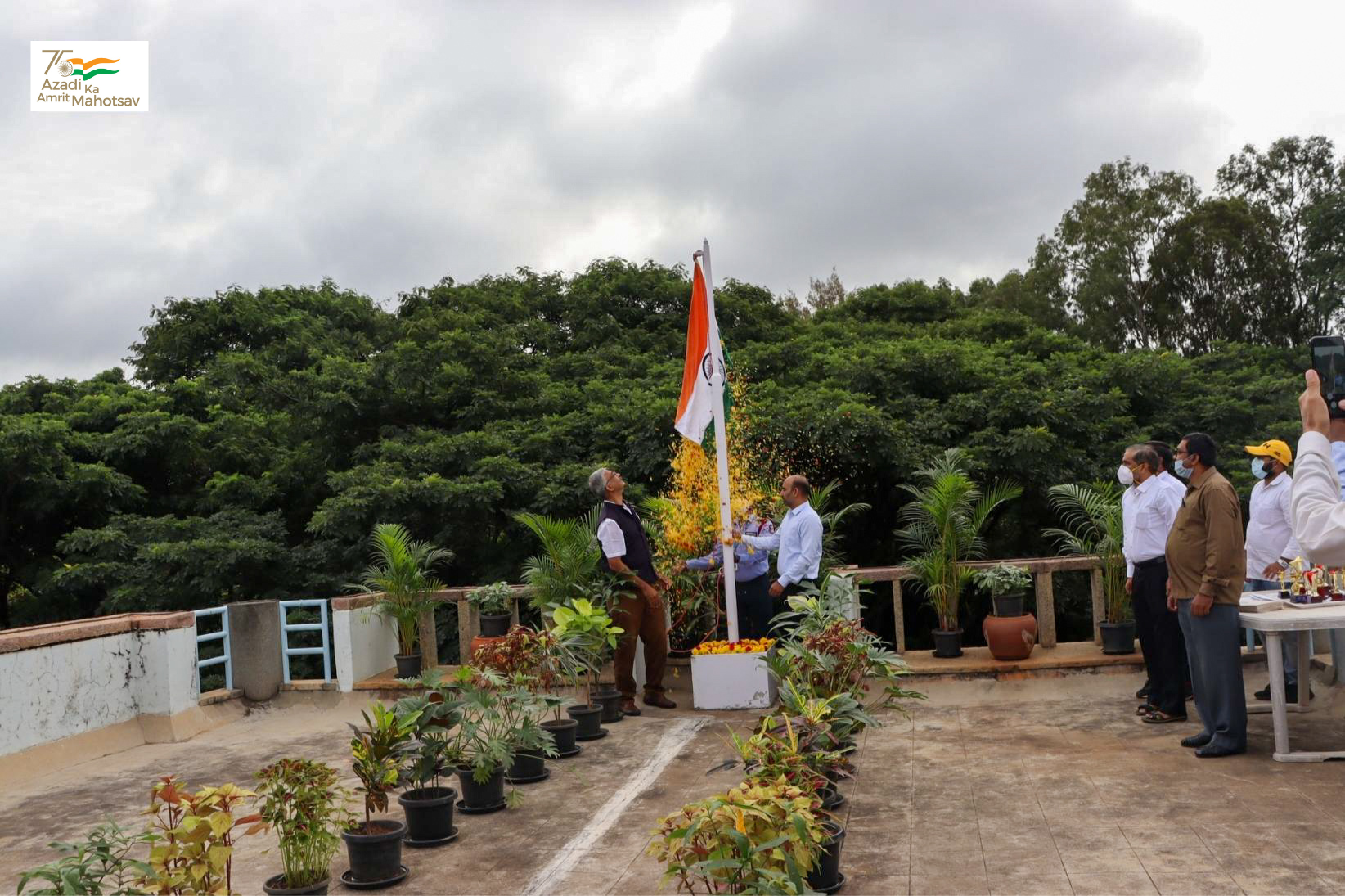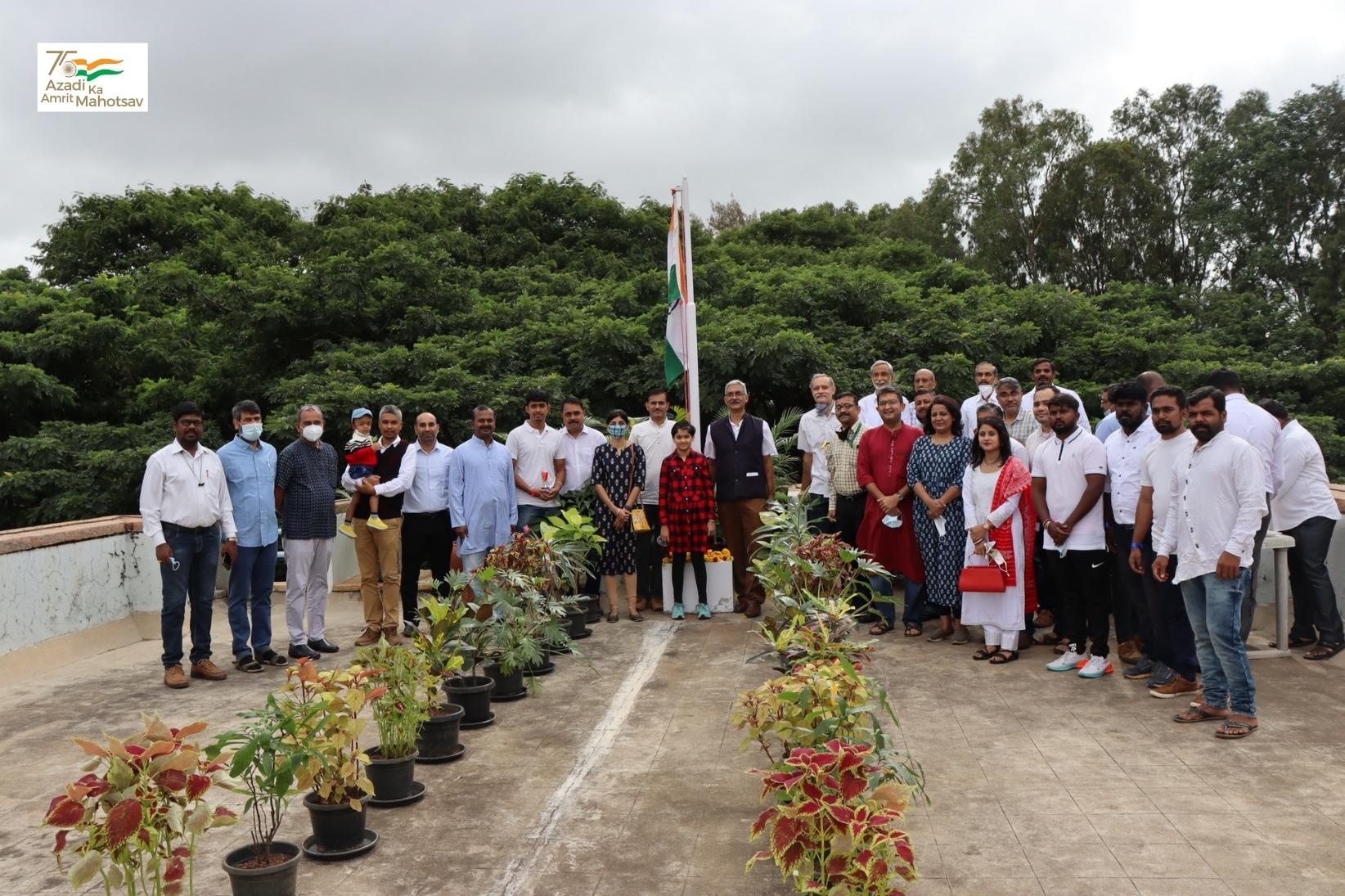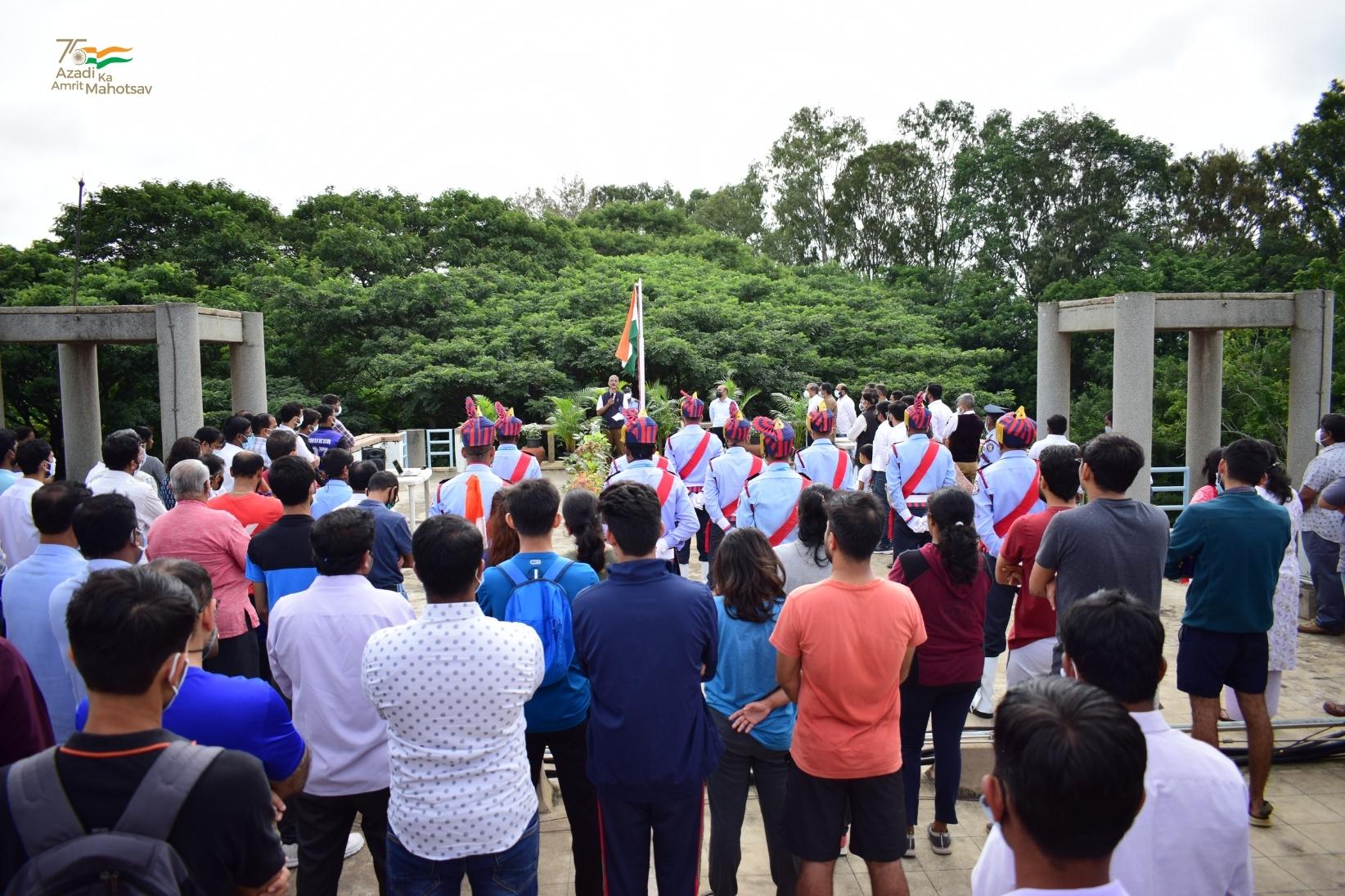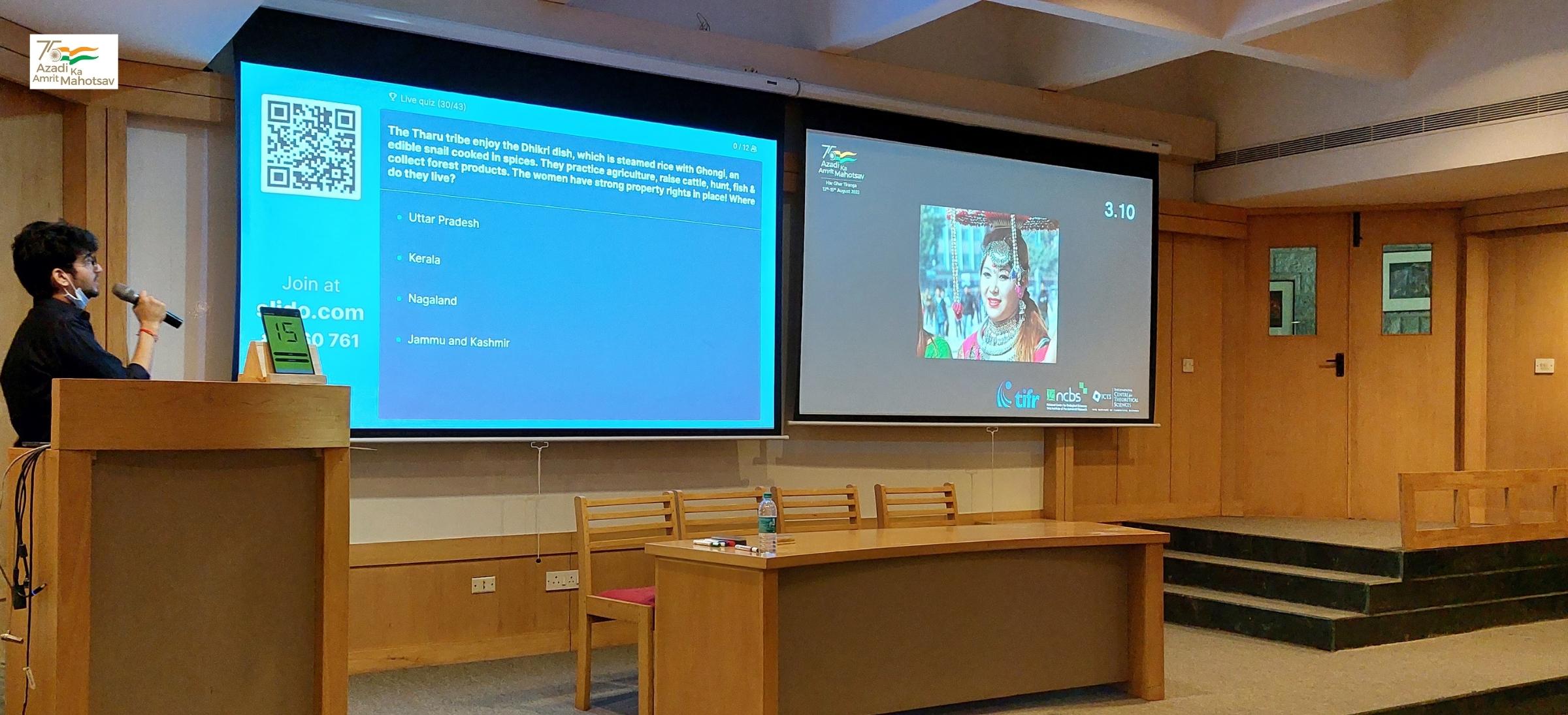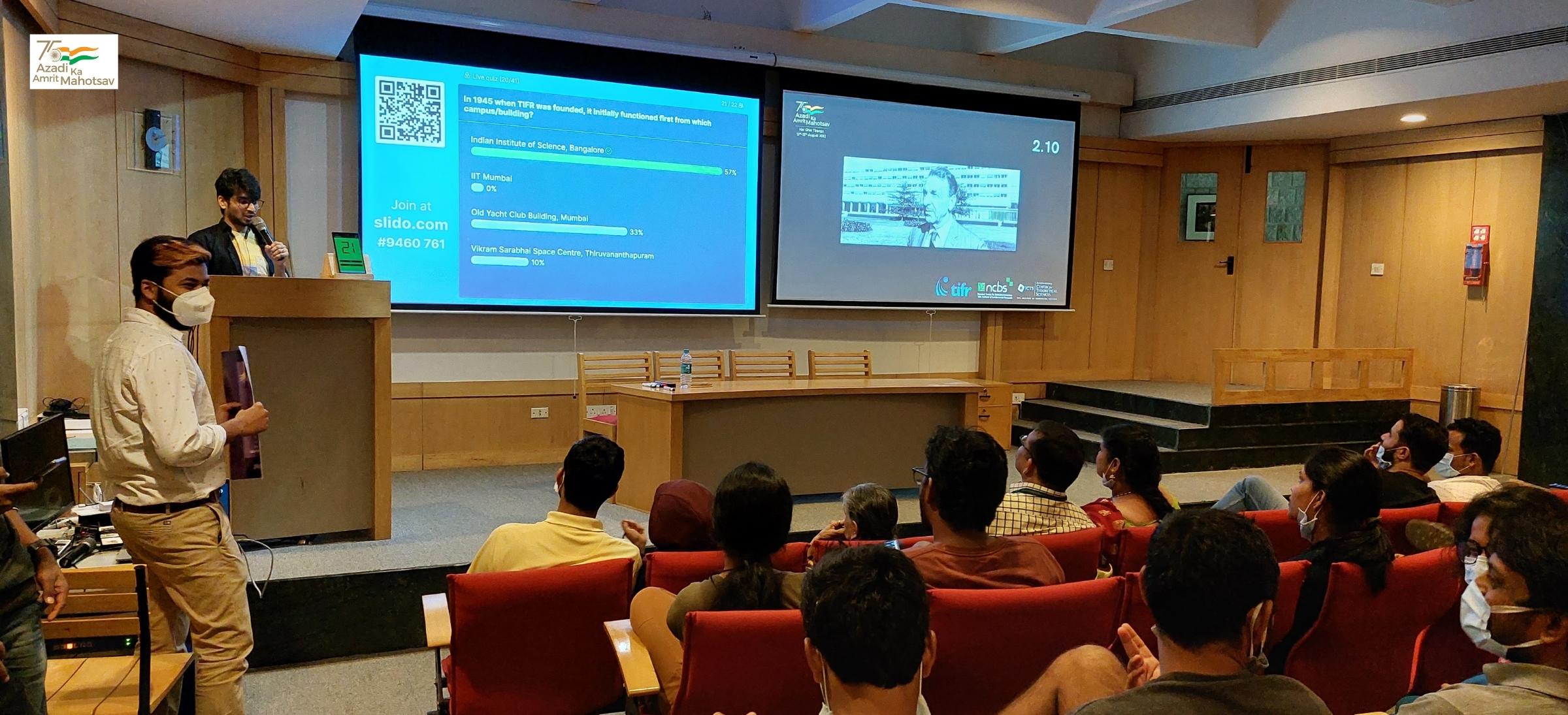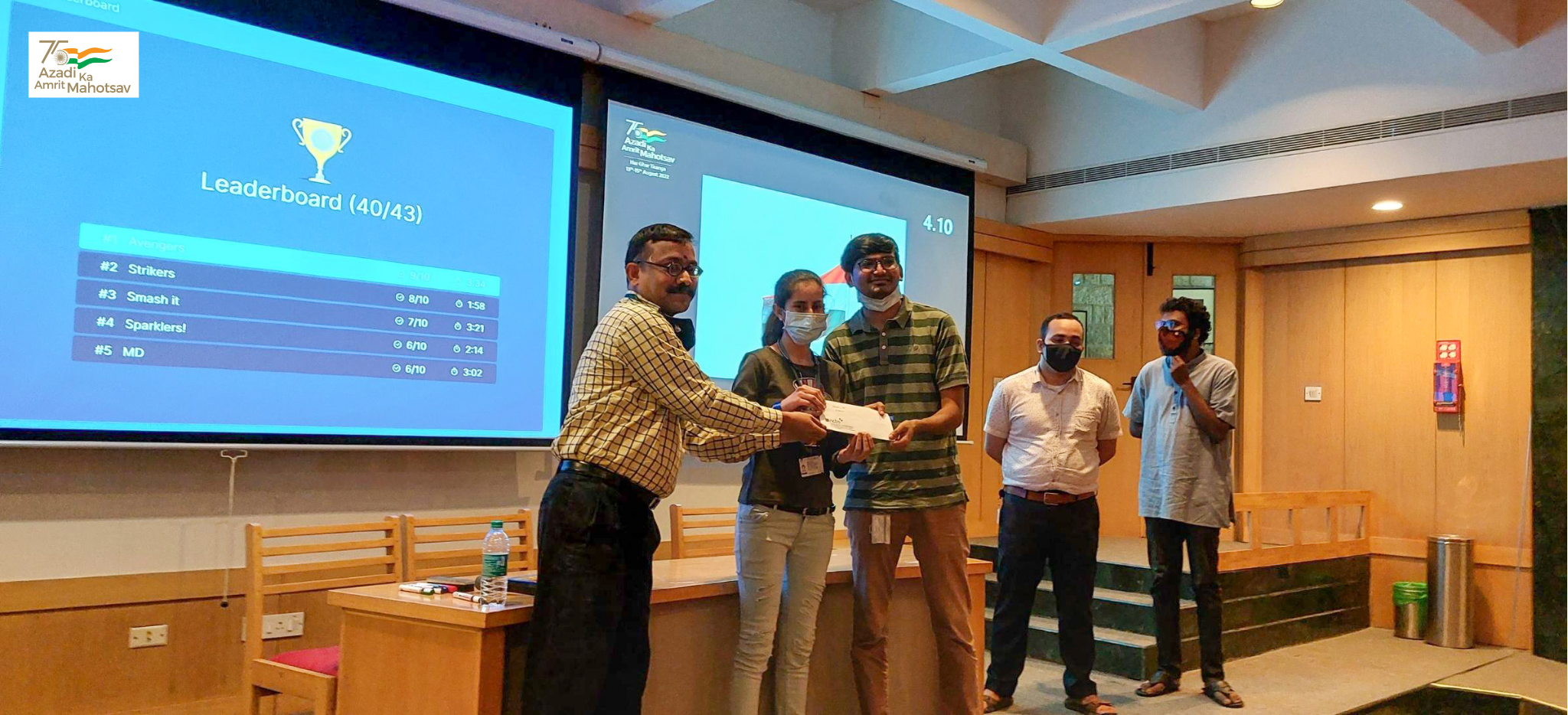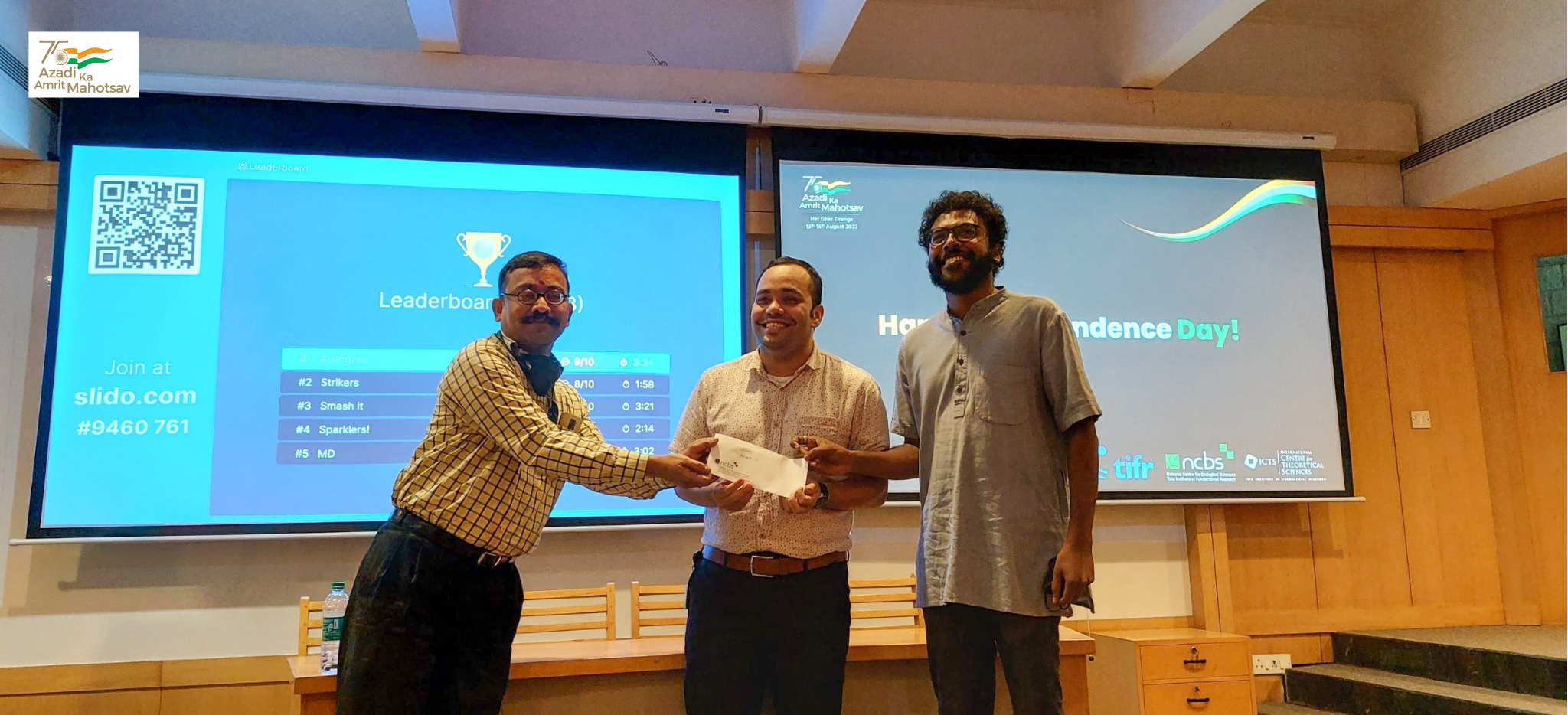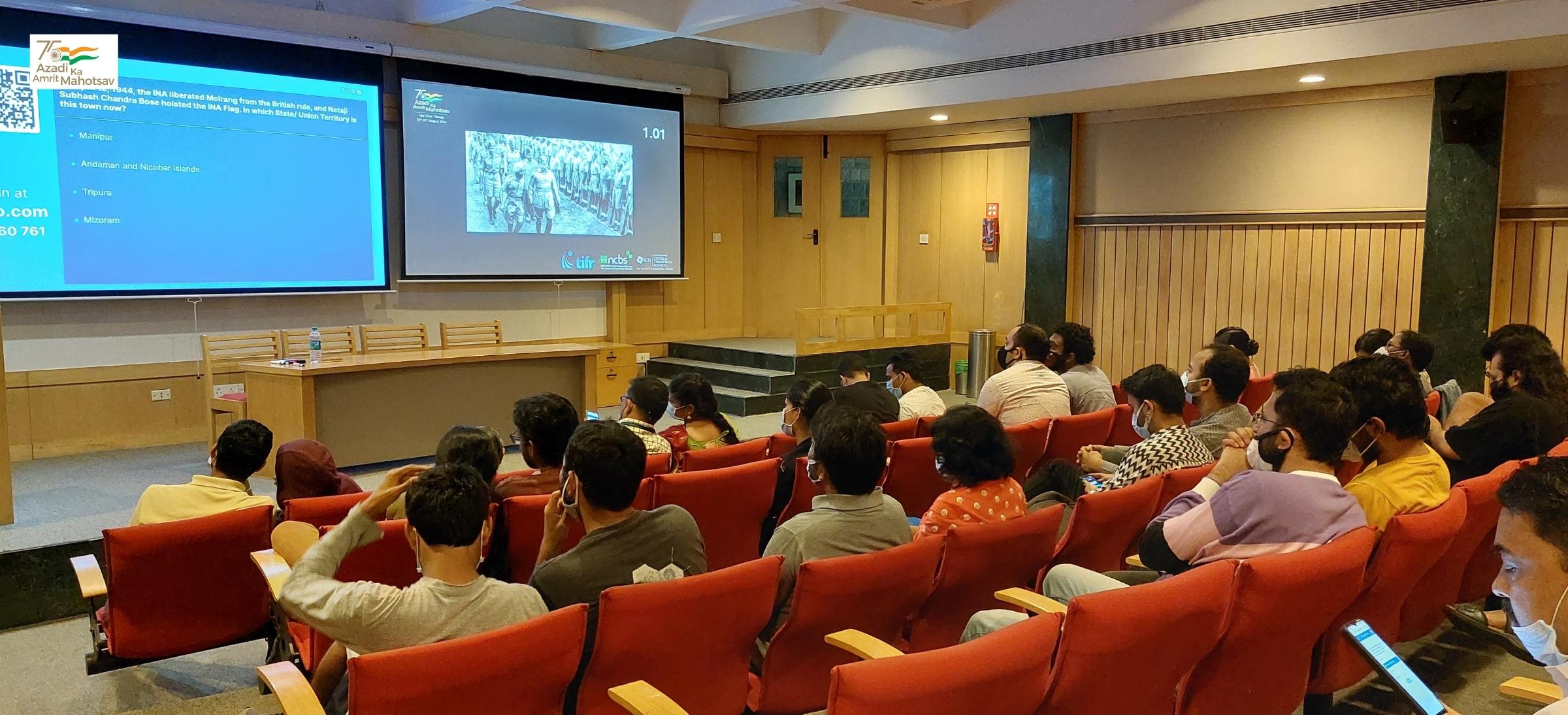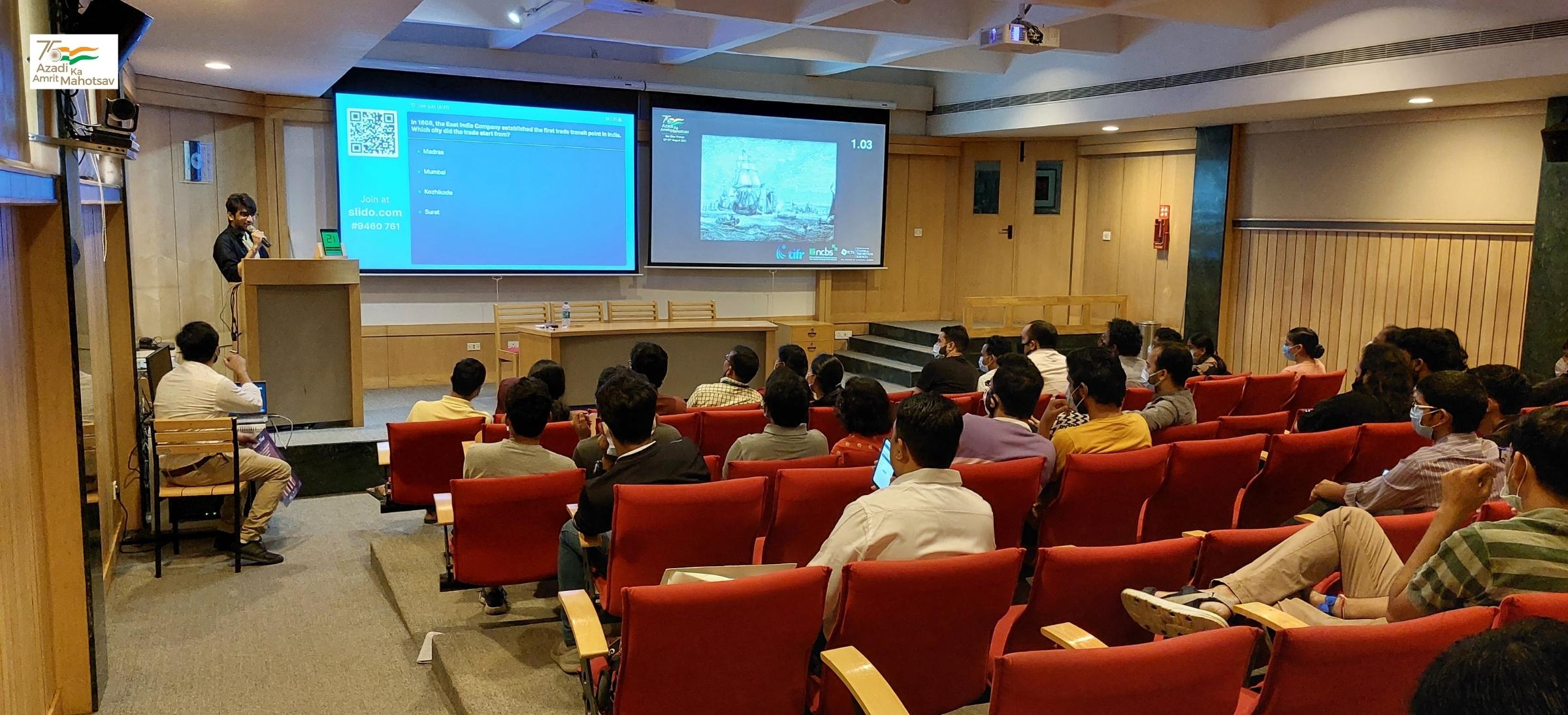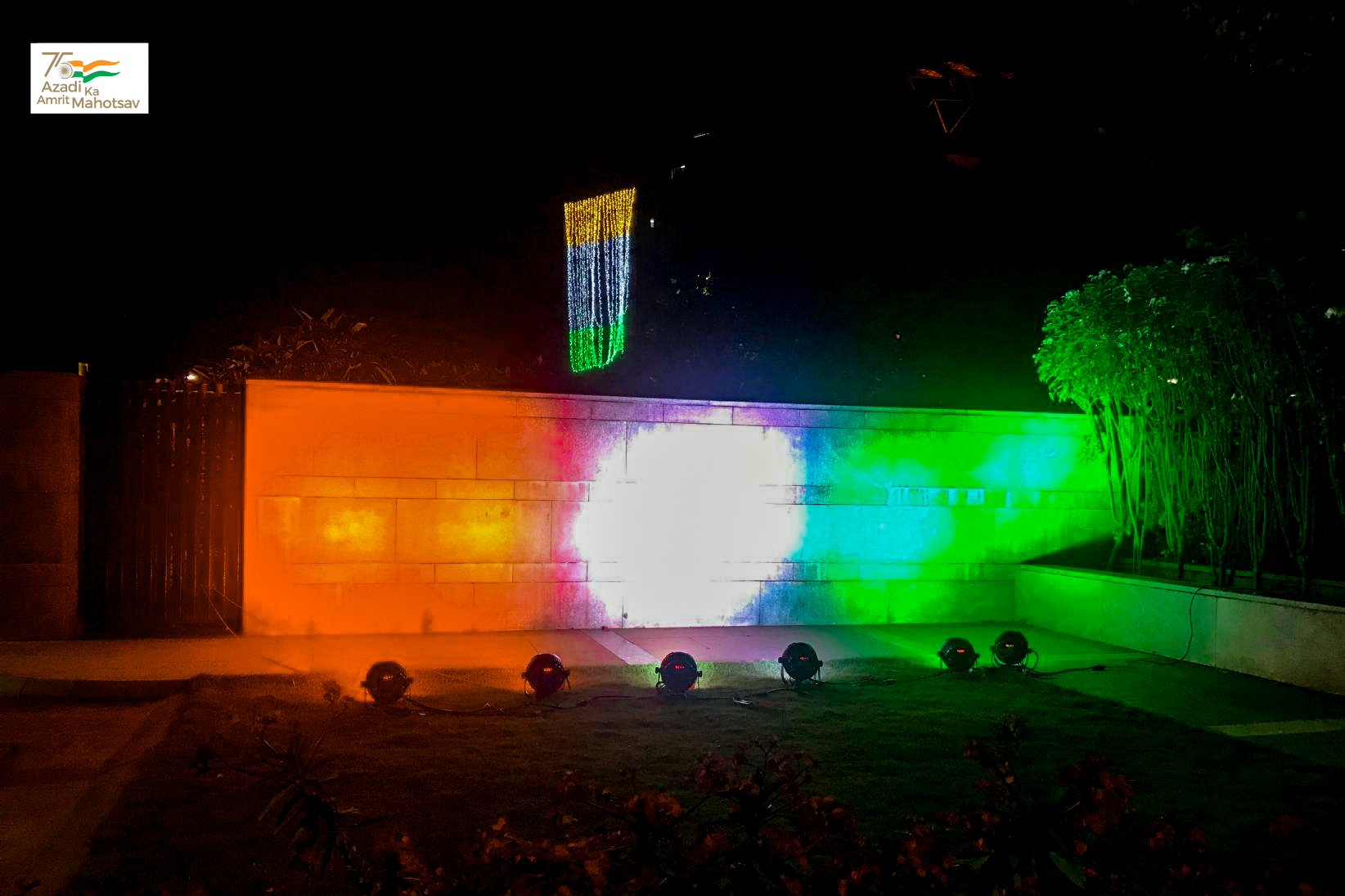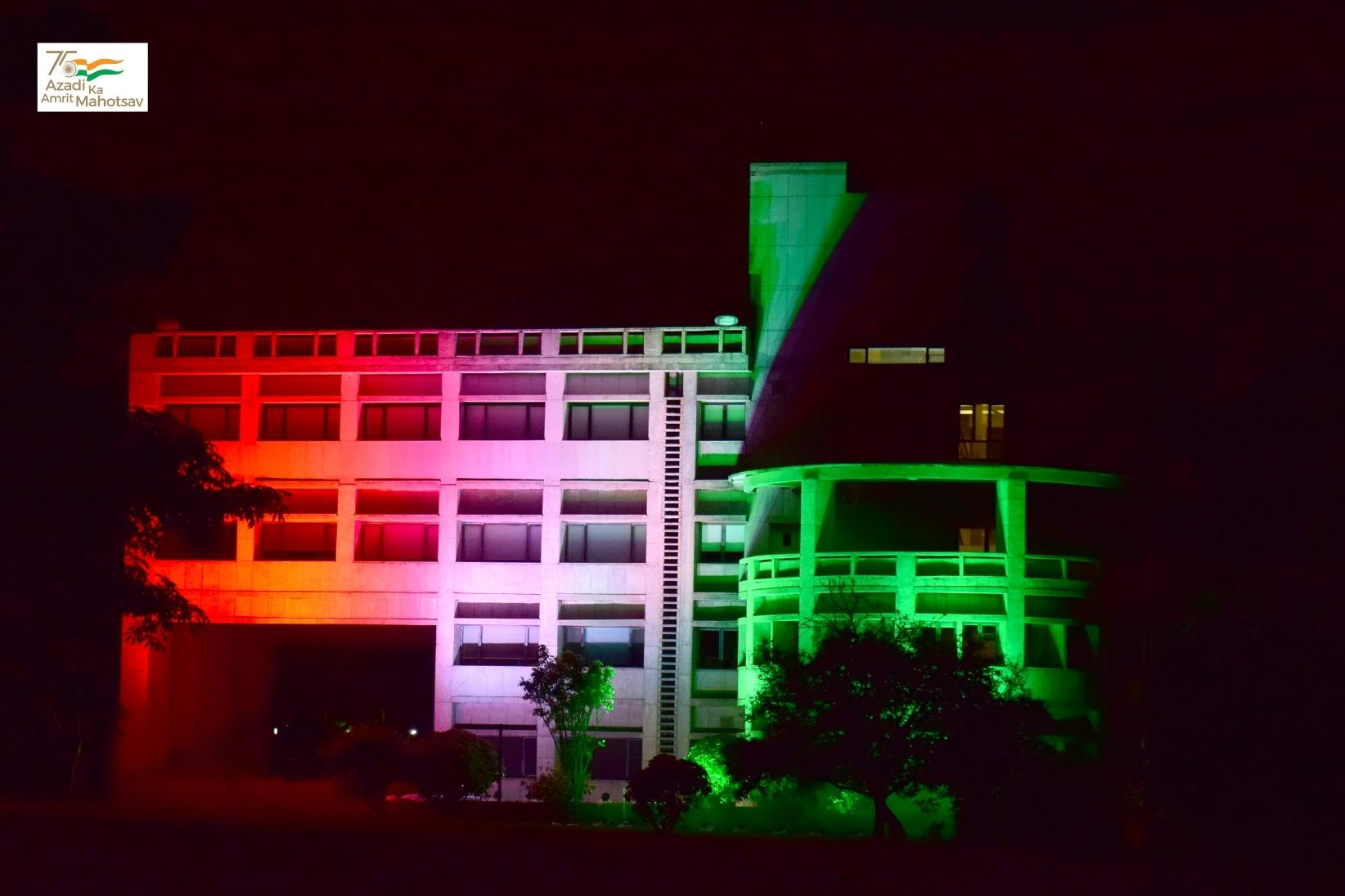Azadi ka Amrit Mahotsav

The Azadi ka Amrit Mahotsav started on a high-energy note at TIFR-NCBS.
Freedom Run
The morning of 15th August saw members of the BLiSC community revealing their athletics skills in a 5 km long ‘Freedom Run’ to kick start the celebrations of the 76th Independence Day.
Flag hoisting
After the run, our centre director, Prof. Satyajit Mayor, hoisted our National Flag. On this memorable day, the director reminded us how important it is to work together and felicitated the contributions and hard work of our staff members with certificates and awards.
Below are the inspiring words Prof. Mayor shared with our BLiSC community and beyond. His speech reminded us how important science and scientific temper are to nation-building and how they continue to be critical to the world.
Independence Day Quiz
After the flag hoisting, the campus auditorium echoed with laughter and excitement during our Independence Day Quiz, co-organised by NCBS and ICTS. Around 50 members from the BLiSC campus community, TIFR-ICTS, and TIFR-CAM participated in the quiz. The questions tested their knowledge about our freedom movement, our country’s scientific achievements and scientists, our national symbols, and India’s diverse culture and geography. After the quiz, everyone gathered for tea and snacks, including the nostalgic Independence Day ladoos!
Campus in tricolour!
By evening our campus buildings were clad in the pious tricolour, sparking the festivities in our hearts. The lights reminded us of our nation’s journey, from the freedom struggle to the present times. Today we are a free and democratic nation! We are self-reliant and contribute towards global advancement and peace.
Connecting with NCBS Alumni
On 25th August, as a part of the AKAM, we hosted the NCBS Alumni Adda with Prof. K Vijay Raghavan. Our alumni community came together for a lively discussion of the opportunities, policies and challenges associated with careers in academia and industry. Organised by the academic office, communications team and the Early Career Researchers’ Council (ECRC), this online event was attended by our alums from different parts of the world. The ECRC members carried out a survey to understand how we can develop future events for our alums that can encourage collaborations and bring new ideas forward.
Insect Exhibition
We also developed and delivered outreach events for the DAE Iconic Week.
On 25th August, the Museum and Field Stations Facility (https://www.ncbs.res.in/research-facilities/museum-fieldstations) curated an exhibition on the world of insects. The exhibits showcased research collections from the facility with an aim to strike conversations on various attributes of insects. There were 3D props to show how insects fly and butterfly specimens to reveal patterns of mimicry in insects. Attendees could learn about how and why beetles roll dung or how cicadas “sing”.
Researchers from the Tata Institute for Genetics and Society joined the exhibition to communicate varied aspects of mosquito research. They even put together an exhibit to help understand the differences between the three most common disease-causing mosquitoes - the Anopheles, the Culex and the Aedes aegypti - which was a hit amongst the students. Our Electron Microscopy facility had an exhibit allowing attendees to look at butterfly scales and bee stings through microscopes. They also shared pictures of how pollen looks under an electron microscope.
616 students (school and college), 40 teachers and 50 campus community members (total - 706) attended this exhibition.
Outreach activities for school children
The following day, researchers from different labs at NCBS went to interact with talks and other fun activities at the Parikrma School, Bangalore. This school is run by Parikrma Humanity Foundation, where free education is imparted to children from nearby slums.
Researchers from Sanja Sane’s lab brought experimental setups and props to communicate how neural signals make body parts move and how the compound eyes of insects work. We delivered this activity with 60 students from the 8th and 9th grades.
We also met the 10th-grade students and discussed the what and how of developmental biology. Using props, scientists from Raj Ladher’s lab shared insights into embryo development, functioning of the inner ear and the sense of hearing. 30 students participated in this session. We had a great time answering all the questions they had for us!
The last activity was an informative quiz for the 10th-grade students, organised by Uma Ramakrishnan's lab. Through play and discussion, we got an opportunity to talk about zoonoses and the role of genetics in wildlife.
We hope to continue developing more such activities that can bridge the gap between science/scientists and the communities around us. We aim to build trust, inform, educate and drive programmes that instill a sense of critical thinking and curiosity!



